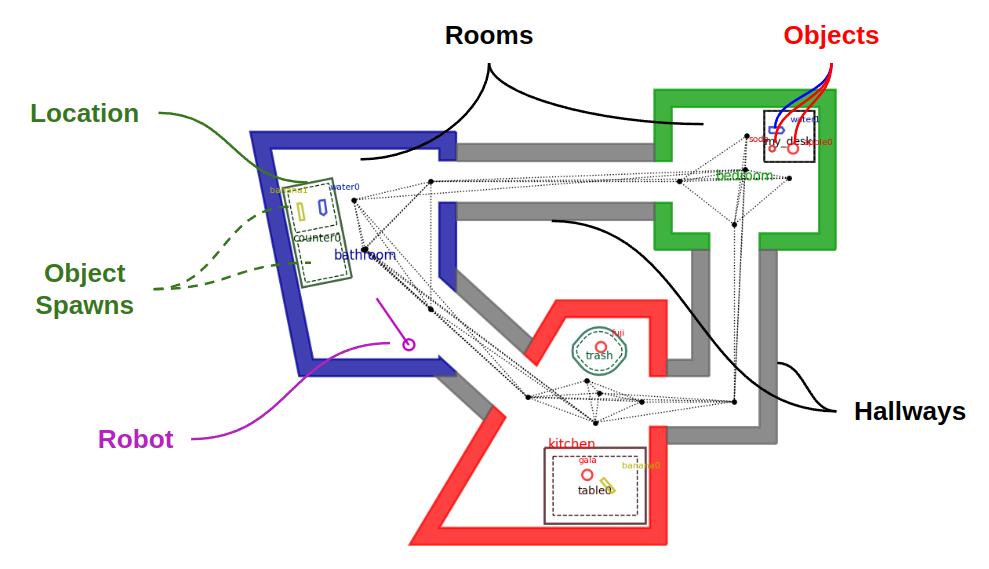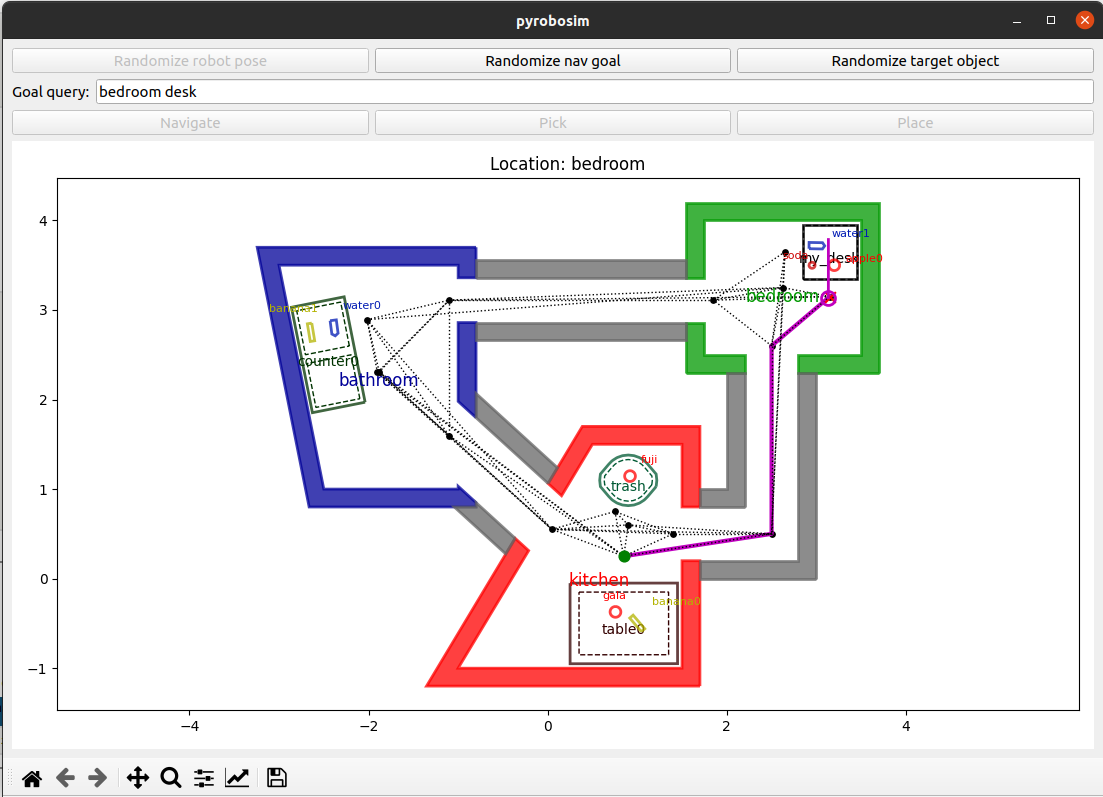Concepts
pyrobosim is primarily a world modeling framework for prototyping robotics applications.
Worlds
Worlds in pyrobosim consist of a hierarchy of polygonal entities, including:
Robots: A movable entity capable of actions that can change its own state and the state of the world.
Rooms: Regions that a robot can navigate.
Hallways: Regions connecting two rooms, which a robot can also navigate.
Locations: Regions inside rooms that may contain objects (e.g., furniture).
Object Spawns: Subregions of locations where objects may exist (e.g., a left vs. right countertop).
Objects: Discrete entities that can be manipulated around the world.
This is all represented in a 2.5D environment (SE(2) pose with vertical (Z) height). However, full 3D poses are representable as well. For more information, refer to the Geometry Conventions section.

Actions
Within the world, we can spawn a robot that can perform a set of actions, such as:
Navigate to a particular entity or pose.
Pick an object from a specific location.
Place an object at a specific location and pose.
These actions can be specified individually, or a sequence of actions (or a plan). Actions or plans can be commanded directly (e.g., “go to the table and pick up an apple”) or as part of a task and motion planning framework that accepts a task specification (e.g., “all apples should be on the kitchen table”) and outputs a plan that, when executed, satisfies the specification.
For example, here is a robot performing a navigate action from the kitchen to the desk in our simple test world.

Vision Statement
The vision for pyrobosim is that you will be able to create worlds to prototype your
robot behavior in a simple environment before moving to a more realistic simulator, or even
real robot hardware.
To enable this, a typical user of pyrobosim would:
Build complex worlds using the world modeling framework, both manually and programmatically.
Define custom actions and action executors (e.g. path planning/following or decision-making algorithms).
Design task and motion planners that go from task specification to task plan.
Export worlds to Gazebo to test in a more photorealistic 3D world with a better robot model.
Some use cases include:
Home Service Robotics with the Toyota HSR – the start of this work!
We look forward to your Git issues, contributions, and usage examples!